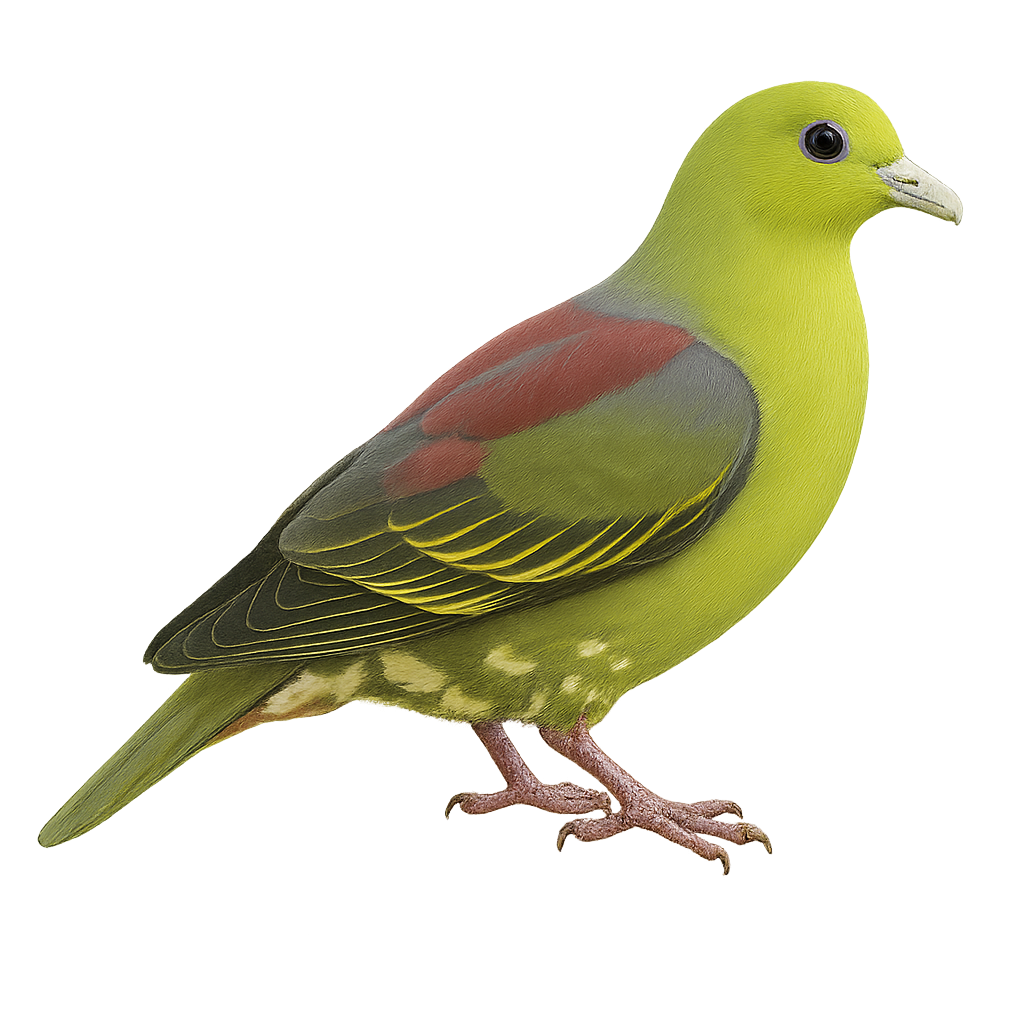Your wildlife photography guide.
Explore the pompadour green pigeon in detail, study its behavior, prepare your shots.
Where to observe and photograph the pompadour green pigeon in the wild
Learn where and when to spot the pompadour green pigeon in the wild, how to identify the species based on distinctive features, and what natural environments it inhabits. The WildlifePhotographer app offers tailored photography tips that reflect the pompadour green pigeon’s behavior, helping you capture better wildlife images. Explore the full species profile for key information including description, habitat, active periods, and approach techniques.
Pompadour Green Pigeon
Scientific name: Treron pompadora

IUCN Status: Least Concern
Family: COLUMBIDAE
Group: Birds
Sensitivity to human approach: Suspicious
Minimum approach distance: 10 m
Courtship display: February to March
Incubation: 14-16 jours
Hatchings: February to April
Habitat:
Tropical forests, mangroves, wooded areas
Activity period :
Primarily active during the day, with peak activity in the morning and late afternoon.
Identification and description:
The Pompadour Green Pigeon, Treron pompadora, is a medium-sized bird belonging to the Columbidae family. It is primarily found in the tropical rainforests of South Asia, notably in India and Sri Lanka. This bird is distinguished by its bright green plumage, with shades of yellow and gray, and distinctive wing markings. Males and females exhibit slight sexual dimorphism, with males having brighter colors. The Pompadour Green Pigeon is frugivorous, feeding mainly on fruits and berries. It plays a crucial role in seed dispersal, thus contributing to forest regeneration. Although generally discreet, it can be observed in small groups, especially during the breeding season.
Recommended lens:
400 mm – adjust based on distance, desired framing (portrait or habitat), and approach conditions.
Photography tips:
To photograph the Pompadour Green Pigeon, focus on tropical forests where it is most active. Use a 400mm or longer telephoto lens to capture precise details of its colorful plumage. Be patient and discreet, as this bird is suspicious. The best opportunities often arise early in the morning or late afternoon when the light is soft and the bird is more active. Consider using a tripod to stabilize your camera and achieve sharp images.
The WildlifePhotographer App is coming soon!
Be the first to explore the best nature spots, track rutting seasons, log your observations, and observe more wildlife.
Already 1 439 wildlife lovers subscribed worldwide

